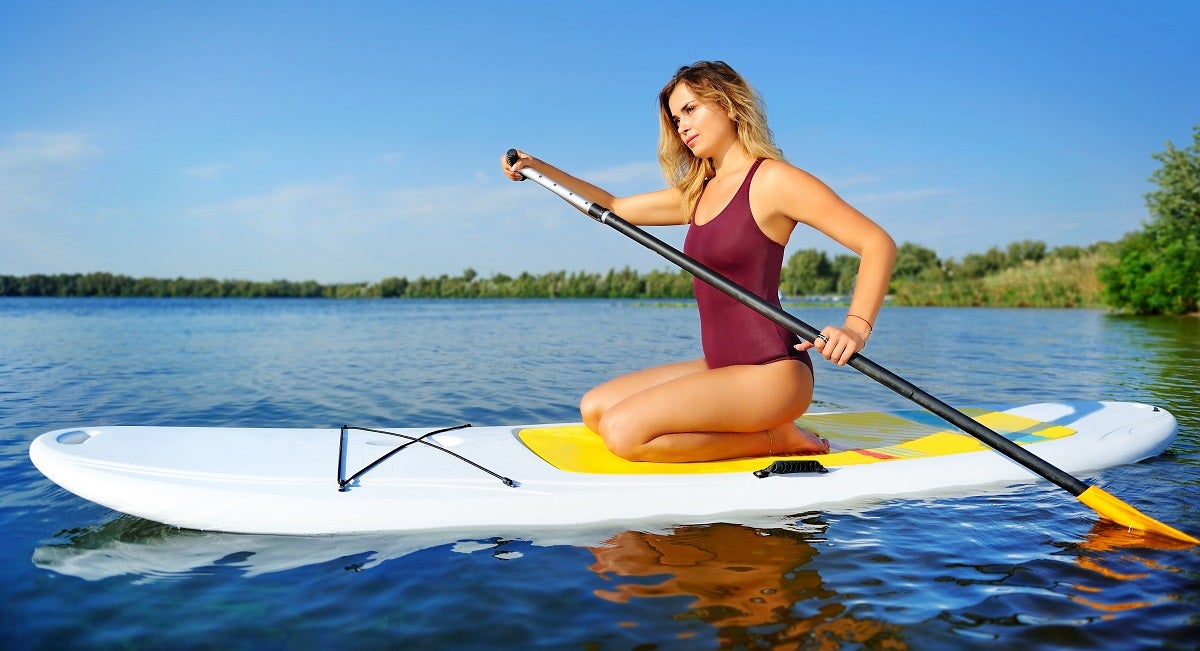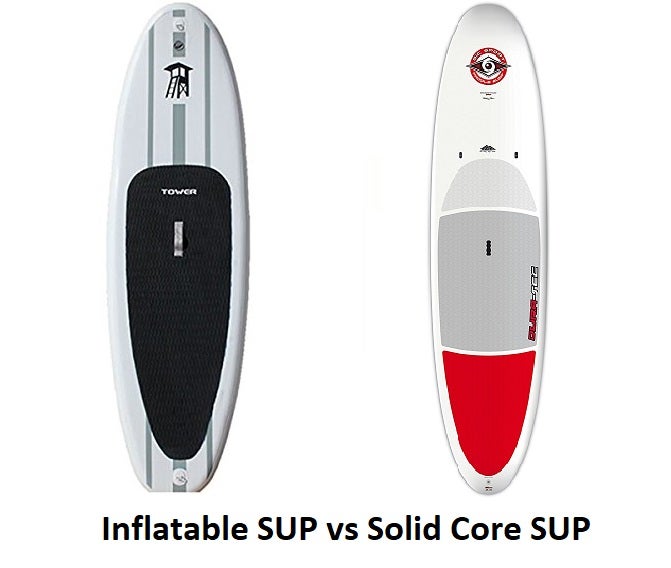
Our Editors independently research, test, and rate what we feel are the best products. We use affiliate links and may receive a small commission on purchases.
So, you’re ready to go buy your next stand up paddle board – how exciting! It’s important to remember that not every SUP is made the same, so whether you’re an absolute newbie to the sport or are looking for an upgrade, there are certain things you want to look out for. We’re here to show you the 7 best tips to know before buying your next SUP so you’re completely happy with the experience and your purchase.
Stability
When you’re first beginning, it’s not going to be as easy as some of the more experienced paddlers would have you believe. If it’s your first paddle board then this should be the biggest feature to look for as you’ll need all the stability you can get.
What makes a stable paddle board? The biggest factor is the board’s dimensions. Make sure to take a look not only at how long it is, but the width and volume. Within reason of course, the more volume it has, and the larger its dimensions, the easier it’ll be to balance on.
Dimensions
With that being said, you probably don’t off the top of your head have an idea of what some good dimensions would be for a beginner. Let’s talk about that so you are well aware of what to look for.
Length – The ideal length for your new SUP should be anywhere from 10 to 12 feet, depending on your height. If you stand around 5 feet to 5’4”, then you’ll want to look at the shorter boards, while if you’re pushing 6 feet or above, at the longer ones
Width – Again, take into consideration your height as this directly influences your arm span, or the length from one tip of your fingers on one hand, to the tip of your fingers on the other when your arms are completely extended straight out at shoulder height. The wider your arm span, generally the wider your body is overall, which will influence the width of board you need.
Again, shorter riders should have around 30 to 31-inch width while those who are taller should look for boards around 33 inches long or so.
Volume – Remember that there are inflatable SUPs and hard SUPs. Inflatables should be anywhere from 225 to 240 L in volume, while hard models should be around 175 L. Inflatables and hard boards each have their own sets of pros and cons, which we’ll cover more in-depth in a little bit.
Exceptions
These aren’t solid, non-flexible rules to follow. You’ll want to take other factors into consideration such as how much gear you’re planning on taking with you on the board, if you’ll be paddling with a partner/dog, etc. Simply put, the more weight you’ll be adding on, the more stability you’ll need.
Storage
Leading into the next thing you need to know, you must consider the kind of storage you have on your new SUP. Some don’t offer any at all, but chances are you’re probably going to want to bring at least a bag with you to hold some valuables, and perhaps your paddle, water, or snacks if you need to. Usually, this storage will be in the form of bungee cords.

Hard or Inflatable?
That brings us to our next point, which is determining which type of SUP to get.
Inflatable – These are much easier to store as all you have to do is deflate it and fold it away when you’re not using it. If you’re planning on paddle boarding on vacation or something, they’re ultra-easy to pack in a bag, too, and often small enough to take in a regular-sized suitcase. You don’t have to worry about dropping it and chipping or shattering it like you would with a hard board.
As they’re so lightweight, you don’t need a lot of upper body strength to haul them around yet often come with higher weight capacities.
Hardboards – If you’re really serious about your performance, hardboards will give you greater speed and more agility (generally speaking). They’re typically smoother on the water and gain momentum easier. If you like surfing, then these are also the way to go. If you are going to be paddling in an area that gets a lot of wind, you’ll also appreciate the fact that these handle windy conditions much more effectively than inflatables, as you can probably imagine.
Hull Types
This will determine how your board works in the water. The 2 most common types of hulls are planning and displacement.
Planing – These are where the bottom of your SUP slightly tapers off towards the edges, kind of like what you’d see with a boat. These are great if you’re just starting out and general paddling.
Displacement – These come with sharp noses which works to displace water on each side (hence the name), which is ideal if you’re someone looking to travel longer distances with your board. Thanks to the water displacement, it kind of cuts through the water which offers less resistance. This makes for a smoother, faster ride.
Price
Finally, how much do you feel comfortable with spending on a new SUP? The great news is, that no matter what your budget is, there will be at least one great option out there that suits it. However, it’s important that you come up with a budget for yourself so you don’t go over it or accidentally spend more than originally planned.
Summary
Now that you know all of the best tips to know before buying your next SUP, are you ready to get out on the water? If you follow our guide, we’re sure you’ll be ahead of the game already. Thanks for tuning in, and we’ll see you again soon! Happy paddling!
Highly Rated SUP Brands
When venturing into the world of stand-up paddle boarding, selecting the right brand can significantly impact your experience. Some of the most highly recommended brands, renowned for their quality, performance, and durability, include ISLE, often praised for its versatile and stable boards like the Explorer Pro and Pioneer series, which cater to a range of skill levels from beginner to intermediate. BOTE is another top contender, with popular models like the Breeze Aero and WULF Aero lauded for their stability and maneuverability, particularly on flat water. For those seeking robust and high-performing inflatable SUPs, Bluefin SUP and Thurso Surf consistently receive high marks for their heavy-duty construction and excellent all-around performance.
Additionally, Red Paddle Co. stands out for its high-quality construction and advanced designs, offering boards like the 10’6″ Ride that are well-regarded by paddlers worldwide. Sea Gods has quickly gained a reputation for creating high-quality, durable inflatable boards with impressive designs. If you’re looking for boards known for their stiffness and durability, Hydrus and Atoll are often cited by enthusiasts. For a blend of speed and stability, brands like Starboard offer a wide range of composite and inflatable options, including their race and touring specific boards, while SIC Maui provides robust and stable choices for various water conditions. Ultimately, the “best” brand will depend on your individual needs, budget, and intended use, but these names consistently rise to the top in terms of user satisfaction and expert recommendations.
